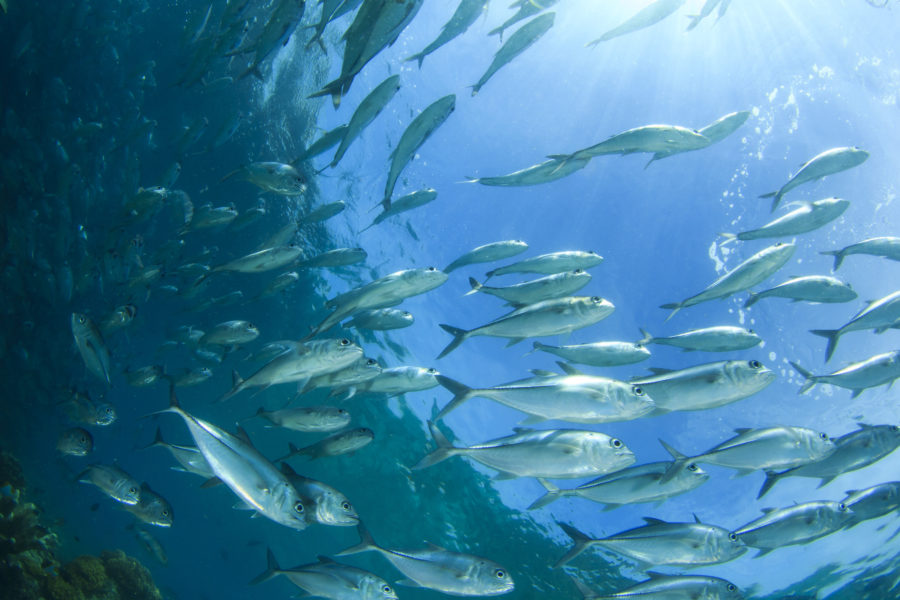16th August 2022 By Contributor
A “beneficiary pays” approach to tourism could support local communities and conservation efforts, writes Hollie Booth of The Biodiversity Consultancy and the University of Oxford.

Subject to overfishing, marine megafauna – such as sharks, rays, and turtles – are among the world’s most threatened species groups. Somewhat paradoxically, these species also have widespread appeal.
Tourist activities, such as scuba diving place considerable economic value on these species. One study values global manta ray tourism at US$140m (NZ$220m) each year.
Marine tourism is often promoted as a more conservation-compatible substitute to unsustainable fishing. However, despite its value, marine tourism rarely contributes directly towards conservation. The economic value of these species is typically extracted by the tourism industry and rarely filters directly into conservation actions.
Coastal communities that depend on marine megafauna for food and income are, in contrast, rarely well placed to benefit from marine tourism.
And subject to restrictive regulations, the costs of marine conservation also often fall on these communities. One study estimated, for example, that catch limits on endangered shark species could cost low-income Indonesian fishers up to 17.6% of their annual revenue.
A potential solution to this inequity is a “beneficiary pays” conservation approach.
Here, a fee is levied on tourists or tourist-focused businesses. The proceeds are then invested into community-based conservation projects, which provide coastal communities with the resources to facilitate conservation, while supporting their livelihoods.
In a recent study, my colleagues and I investigated the feasibility of this approach.
Using an online survey of people with a general interest in travel, we established the willingness of international marine tourists to pay towards community-based shark conservation. Participants were presented with a scenario in which they were at a tropical beach destination. They were also informed of a nearby community highly dependent on catching endangered sharks.
Given this scenario, participants were asked the maximum amount they would pay for a marine conservation fee. The fee, added to the price of marine activities, would directly compensate local fishers for reducing their catch of endangered shark species.
By combining the average willingness-to-pay per person with market data from two popular Indonesian holiday destinations – Lombok and Pulau Weh, both home to several endangered shark species – we estimated how much conservation revenue could be raised annually.
Our results show wide support for tourism levies.
Survey respondents were willing to pay a daily average of US$10–15 per person towards community-based marine conservation projects.
This corresponds to US$2.3–$6.8m (NZ$3.6–$10.7m) per year in Lombok and US$300,000–$900,000 ($472,000–$1.4m) per year in Pulau Weh in potential revenue for coastal communities. The lower estimate is based on a levy of US$10 per day and one day of marine activities per tourist, and the upper based on US$15 per day and two days of marine activities per tourist.
These revenues exceed the estimated costs of community-based shark conservation in nearby fisheries. Pilot projects are already ongoing in these communities, whereby fishers are compensated for releasing critically endangered species, with some early success.

Marine tourism is an underutilised source of revenue for marine conservation. However, financing mechanisms must be appropriately designed.
Respondents in our study expressed strong preferences for funding environmental NGOs or direct payments to local communities. There was less support for paying a levy to national or local governments. This implies that for marine tourism levies to be successful, the revenues must be openly distributed to locally-run projects.
Our research also found that travellers’ willingness to pay depended on their holiday budget. Therefore, conservation revenue may be higher in luxury destinations and far lower for budget destinations. This highlights the need for mechanisms to be adapted to local contexts and markets.
We would also suggest, based on our findings, that offering information about marine conservation at the “point of sale” may not be needed. We found that existing pro-environmental behaviours led to a greater willingness to pay. Providing information on shark conservation issues directly prior to the survey had little effect on the willingness of participants to pay.
Over 80% of respondents also agreed that they would be more likely to purchase goods and services from environmentally conscious tourism companies. This further raises the possibility that companies who incorporate conservation levies into their prices may even be deemed more attractive by customers.
Reef areas attract about 70 million tourists annually. If each tourist is willing to pay just US$10 per trip, marine tourism levies could generate at least US$700m (NZ$1.1bn) for marine conservation annually, and in doing so ensure that vulnerable coastal communities do not bear the full costs.
Marine tourism levies can become a key financing mechanism for delivering global biodiversity goals and addressing mismatches between the costs and benefits of marine conservation. But only if they are correctly designed.
There is a clear opportunity for tourism operators, governments, NGOs, and coastal communities to develop partnerships to ensure the potential of marine tourism levies can be realised.
Hollie Booth is Nature Positive senior specialist at The Biodiversity Consultancy, and post-doc research associate at the University of Oxford.
This article is republished from The Conversation under a Creative Commons licence. Read the original article.
2 Apr 2024 Govt scraps Kermadecs marine sanctuary bill
20 Feb 2024 Seaweek events returning